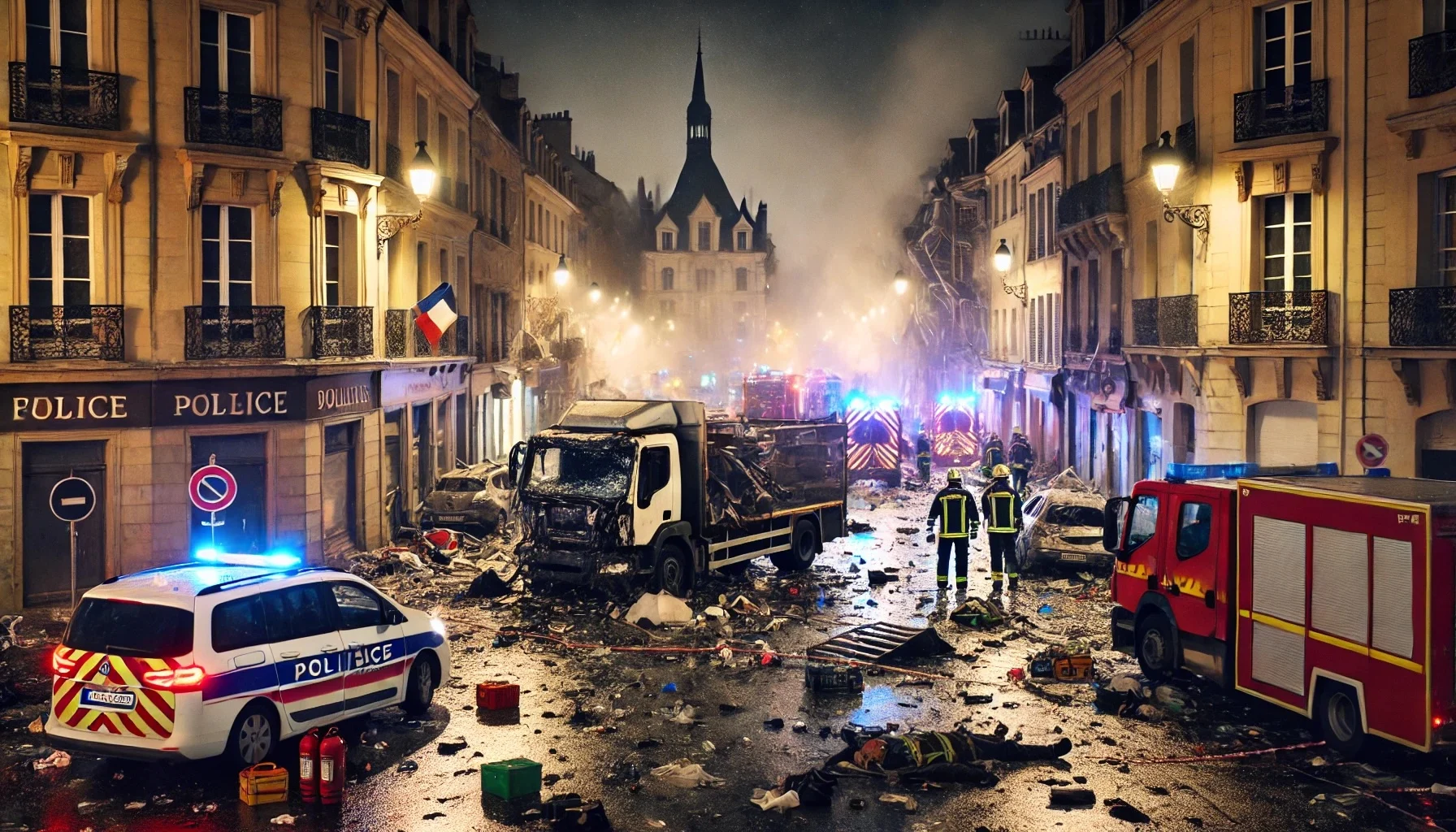
The Nice Truck Attack
by: The Calamity Calendar Team
July 14, 2016
A Night Meant for Celebration
The sun had set over the beautiful coastal city of Nice, France, on July 14, 2016. The Promenade des Anglais, a picturesque stretch along the Mediterranean, was teeming with people. They had gathered to celebrate Bastille Day, France’s national holiday commemorating the French Revolution. As fireworks lit up the night sky, families, tourists, and locals reveled in the joy of the occasion, unaware of the impending horror.
The Lead-Up to Tragedy
France had been reeling from a series of terror attacks. The Charlie Hebdo shooting in January 2015 and the coordinated Paris attacks in November 2015 had plunged the country into a state of emergency. Heightened security measures had become the norm, with a palpable tension lingering in public spaces. The Nice Attack would soon become another grim chapter in this ongoing narrative of fear and resilience.
The Attack Unfolds
10:30 PM: The grand fireworks display concluded, and the crowd began to disperse. Families strolled along the promenade, children laughed, and vendors packed up their stalls. The festive atmosphere was palpable.
Thanks for subscribing!
10:40 PM: Amidst the departing crowds, Mohamed Lahouaiej-Bouhlel, a 31-year-old Tunisian living in France, launched his deadly attack. He drove a 19-tonne cargo truck into the pedestrian zone, accelerating to maximize devastation. Witnesses recalled the terrifying sound of the truck barreling down the promenade, its driver zigzagging to hit as many people as possible.
10:40 - 10:45 PM: For approximately five harrowing minutes, Bouhlel plowed through the crowd, leaving a trail of destruction. The truck covered 1.2 miles (2 km), striking down men, women, and children indiscriminately. Screams of panic and confusion filled the air as people tried desperately to escape the onslaught.
10:45 PM: The rampage ended when police officers intercepted the truck. A brief exchange of gunfire ensued, and Bouhlel was shot dead at the scene. The immediate threat was neutralized, but the aftermath was a scene of unimaginable horror.
The Human Toll
The attack claimed 86 lives, including 10 children, and left 458 injured. The physical damage to the area was minimal, but the human cost was staggering. Survivors spoke of the chaotic scene—bodies strewn across the promenade, the injured crying out for help, and the desperate attempts of strangers to aid the wounded.
The Aftermath
Nice, a city known for its beauty and tranquility, was thrust into mourning. The economic impact was significant, particularly on the tourism sector, a vital part of the local economy. Vigils and memorials were held across the city, as people came together to honor the victims and support one another.
Government and Emergency Response
Emergency services and hospitals in Nice were quickly mobilized to handle the crisis. President François Hollande extended the state of emergency, and France intensified its counter-terrorism efforts. Security measures were reviewed and enhanced to prevent future attacks.
Community Resilience
In the face of such tragedy, the community showed remarkable resilience. Psychological support was made available to those affected, and numerous vigils and memorials provided a space for collective grieving. The solidarity displayed by the citizens of Nice and people worldwide sent a powerful message against terror.
Ongoing Threats and Reflections
Mohamed Lahouaiej-Bouhlel was found to have been radicalized rapidly, influenced by jihadist propaganda but with no direct ties to established terrorist groups. The attack highlighted significant security gaps and prompted a reevaluation of public safety measures. The Nice Attack serves as a somber reminder of the persistent threat of terrorism and the need for vigilance and unity in the face of such challenges.
Conclusion
The Nice Attack on July 14, 2016, was a devastating event that shook France and the world. As we remember the victims and honor their memory, it is crucial to reflect on the resilience and strength of communities in the aftermath of terror. The attack underscored the ongoing threat of terrorism and the importance of continued efforts to safeguard public safety and promote peace.
Stay in the Loop!
Become a Calamity Insider and get exclusive Calamity Calendar updates delivered straight to your inbox.
Thanks! You're now subscribed.